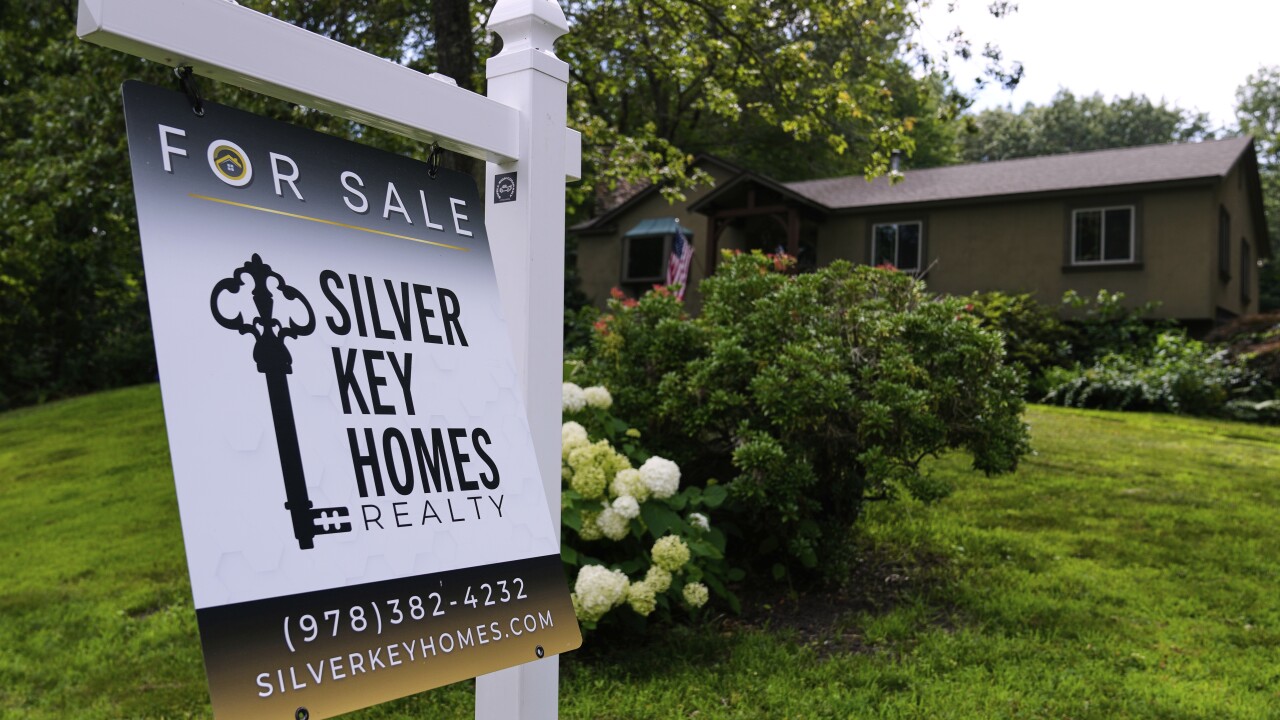The average rate on a 30-year U.S. mortgage eased this week, offering little relief for prospective homebuyers facing record-high home prices.
The long-term rate slipped to 6.74% from 6.75% last week, mortgage buyer Freddie Mac said Thursday. A year ago, the rate averaged 6.78%.
Borrowing costs on 15-year fixed-rate mortgages, popular with homeowners refinancing their home loans, also eased. The average rate dropped to 5.87% from 5.92% last week. A year ago, it was 6.07%, Freddie Mac said.
Elevated mortgage rates have been weighing on the U.S. housing market, which has been in a sales slump going back to 2022, when rates started to climb from the rock-bottom lows they reached during the pandemic.
RELATED STORY | Millions want to own but can't: What's being done to address the housing crisis?
Sales of previously occupied U.S. homes, which sank to their lowest level in nearly 30 years in 2024, have remained sluggish this year and slid last month to the slowest pace since last September. Sales of new single-family homes edged up 0.6% last month, but the sales pace for June and May have been the slowest since last October.
While there are more homes on the market than a year ago, rising home prices and stubbornly high mortgage rates have made homeownership financially untenable for many Americans. Elevated mortgage rates are also discouraging many homeowners from selling because they locked in mortgage rates when they were much lower.
“The persistent risk of tariff-driven inflation, combined with a rising U.S. fiscal debt —- expected to grow further following the passage of the Big Beautiful Bill Act —- has helped establish a relatively high floor for interest rates, at least for now,” said Jiayi Xu, an economist at Realtor.com.
Mortgage rates are influenced by several factors, from the Federal Reserve’s interest rate policy decisions to bond market investors’ expectations for the economy and inflation.
The main barometer is the 10-year Treasury yield, which lenders use as a guide to pricing home loans. The yield was at 4.41% at midday Thursday, down from 4.40% late Wednesday, following the latest signals that the U.S. economy seems to be holding up OK despite all the pressures on it from tariffs and elsewhere.
Yields have moved higher for most of this month as traders bet that the Fed will hold its key short-term interest rate steady at its upcoming meeting next week, despite President Donald Trump demanding that the Fed to lower rates.
A less independent Fed could mean lower short-term rates, which influence the interest consumers pay on credit cards and auto loans, but it could have the opposite effect on the longer-term bond yields that influence the rates on home loans.
The average rate on a 30-year mortgage has remained relatively close to its high so far this year of just above 7%, set in mid-January. The 30-year rate’s low point this year was in early April when it briefly dipped to 6.62%.
Economists generally expect the average rate on a 30-year mortgage to remain above 6% this year. Recent forecasts by Realtor.com and Fannie Mae project the average rate easing to around 6.4% by the end of this year.



